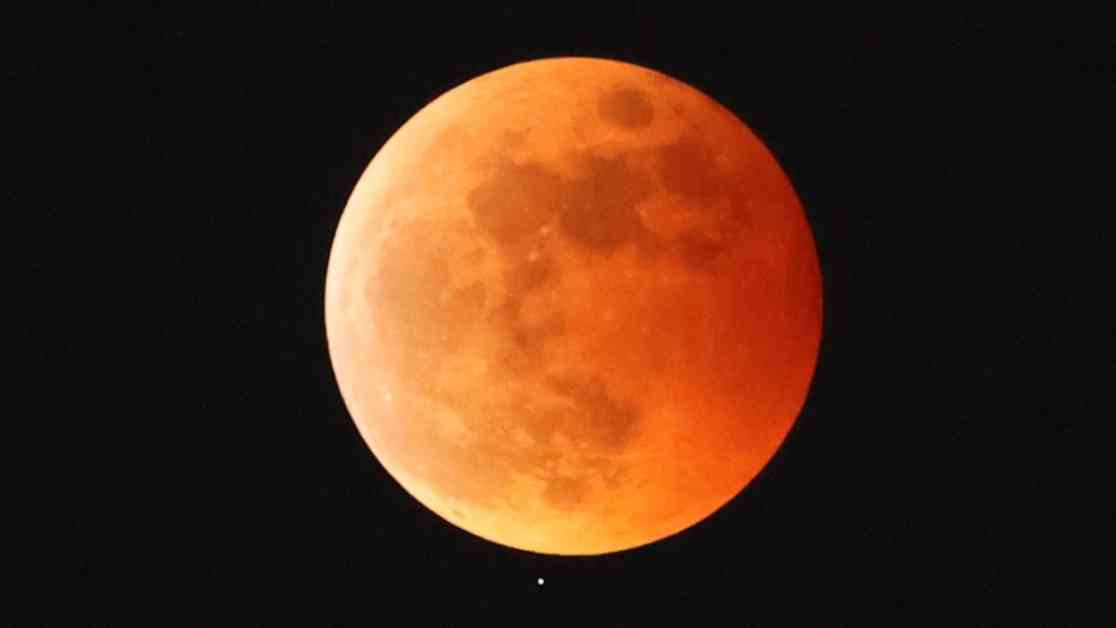Get ready to witness a celestial spectacle as a total lunar eclipse, also known as a “blood moon,” graces the night skies over North America and South America on the night of March 13-14, 2025. This rare event will mark the first total lunar eclipse since 2022, offering viewers a mesmerizing display as the full moon travels through Earth’s shadow, casting a striking reddish hue for approximately 65 minutes. Unlike a total solar eclipse that is visible only within a narrow path of totality, a total lunar eclipse can be seen from anywhere on Earth’s night side, making it a truly global phenomenon.
The Science Behind the Spectacle
During a total lunar eclipse, Earth is positioned directly between the sun and the full moon, causing our planet’s darkest shadow, the umbra, to envelop the lunar surface. The moon takes on a reddish hue during this time because the only light reaching it is sunlight refracted through Earth’s atmosphere. This atmospheric refraction filters out shorter wavelengths of light, leaving behind long-wavelength, reddish hues that paint the moon a deep crimson color, reminiscent of a blood moon. The physics behind this phenomenon mirror the captivating colors seen during sunrise and sunset, creating a visual feast for sky gazers.
Witnessing the Lunar Eclipse
The total lunar eclipse will unfold in five stages between 11:57 p.m. and 6 a.m. EDT, with the moon transitioning through Earth’s outer shadow, or penumbra, before entering the umbra and gradually transforming into a radiant blood moon. Totality, the highlight of the eclipse, will showcase the moon in all its reddish glory for a span of 65 minutes before gradually receding back to its regular bright, white-gray appearance. This captivating progression offers viewers a rare opportunity to witness the celestial dance between Earth, the moon, and the sun.
For observers in North America, the eclipse schedule varies depending on your location. In eastern regions, the partial phase will commence at 1:09 a.m. EDT on March 14, with totality occurring from 2:26 a.m. to 3:32 a.m. EDT. On the West Coast, the eclipse will kick off at 10:09 p.m. PDT on March 13, with totality unfolding from 11:26 p.m. to 12:32 a.m. PDT on March 14. These time variations are simply a result of different time zones, as lunar eclipses are synchronized global events that unfold simultaneously worldwide.
Enhancing Your Viewing Experience
While the total lunar eclipse can be observed with the naked eye, utilizing a backyard telescope or a pair of stargazing binoculars can enhance your viewing experience by allowing you to appreciate the intricate details of Earth’s shadow crossing the lunar surface. These tools can reveal the eclipse unfolding over specific lunar features, such as prominent craters, adding another layer of fascination to this celestial spectacle.
If you happen to miss the March total lunar eclipse, fret not, as another opportunity awaits later in 2025. On the night of September 7-8, another total lunar eclipse will grace the skies, though it will be best observed from Asia, offering a unique viewing experience for sky watchers in that region.
As you prepare to witness the upcoming total lunar eclipse, remember to mark your calendars and set aside some time to marvel at this awe-inspiring celestial event. Whether you’re a seasoned stargazer or a casual observer, the beauty of a blood moon casting its reddish glow across the night sky is a sight to behold, connecting us to the vast wonders of the universe in a truly magical way.










